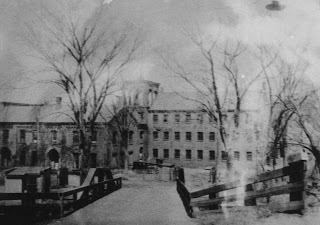Built 1847 Opened 1847 Added to NRHP 23 June 1983 | NRHP Reference # 83000734 Area 2 ha | |
 | ||
Architectural style Greek Revival architecture Similar City Hall, Ames Monument, Wellfleet Drive‑In Theater, Springfield Armory, Willimansett Bridge | ||
Ames Manufacturing Company has its origins in blacksmith and founder, Capt. John Ames, who in 1774, made some of the first manufactured shovels in what would emerge as the new, United States of America.
Company history
The Ames Manufacturing Company has its origins in a factory established in 1774 in Chelmsford, Massachusetts by John Ames, a blacksmith. It was continued by the founder's son by Nathan Peabody Ames (1803-1847) and produced its first swords for the US Government in 1832. A foundry was added, to cast cannon and bells. Nathan and James Ames, sons of John Ames, established a cutlery and tool factory in Chicopee Falls, Massachusetts in 1829, which was formally incorporated as the Ames Manufacturing Company in 1834. In addition to producing military equipment for many years, including (in addition to swords) cannons, cannonballs, it also produced sewing machine and bicycle parts in the later 19th century. The company was a major supplier of bicycles to the Overman Wheel Company from 1883-1887.
It is also noted as the foundry where a number of well-known public statues were cast, including large equestrian statues of George Washington (at the Boston Public Garden and in Washington, D.C.), a statue of Benjamin Franklin (Boston), a statue of Major John Mason, and the bronze doors of the United States Capitol. The sword manufacturing business was formally separated into an independent company in 1881.
The historic Ames Company factory, located at 5-7 Springfield Street in Chicopee, Massachusetts, is a complex of connected industrial buildings, the oldest of which date to 1847. Most of the older elements are brick in construction, and range in height from one to four stories. This complex was added to the National Register of Historic Places in 1983. The largest surviving buildings have been converted into residences.
